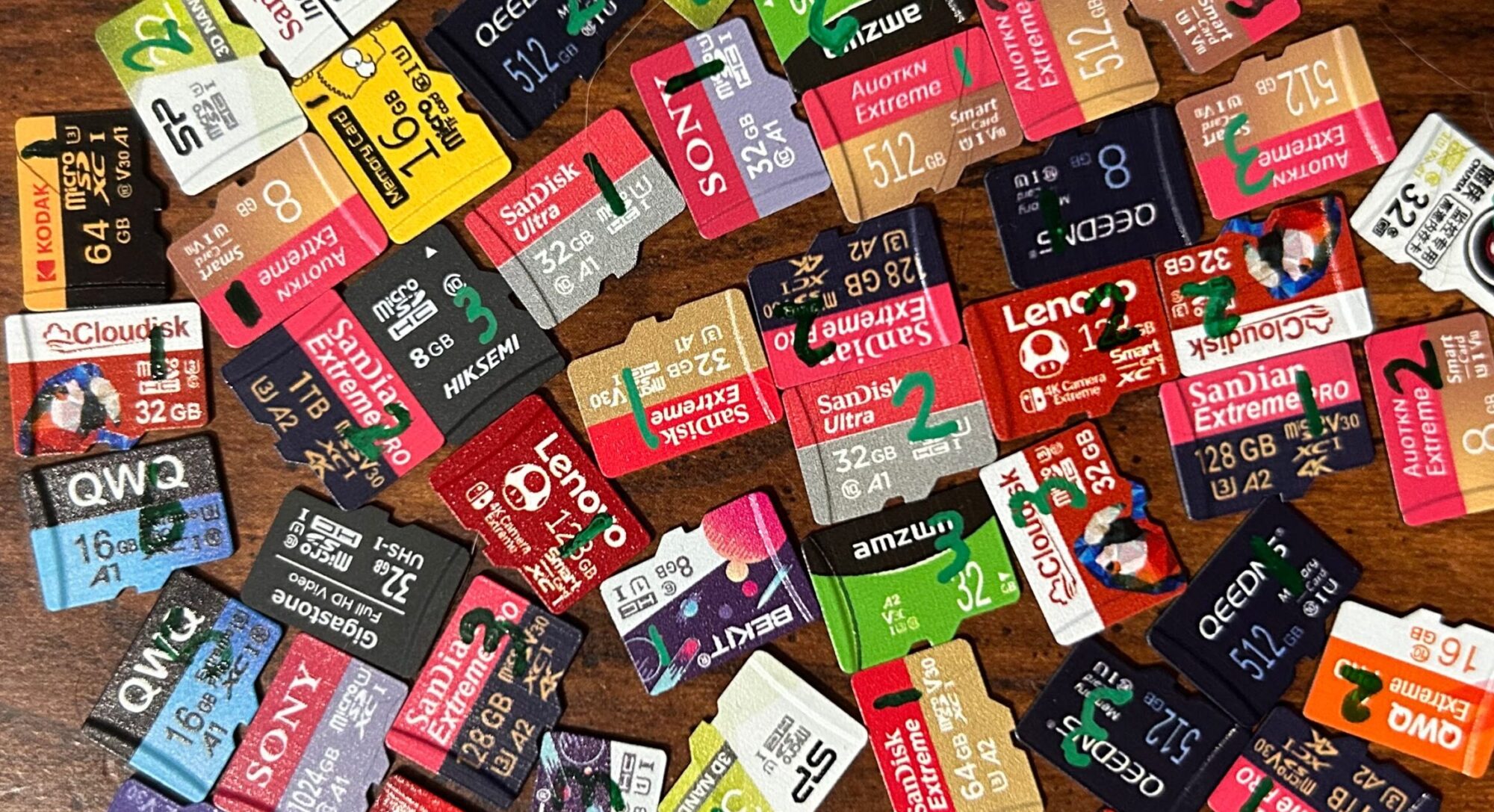Kioxia is a major brand that has its roots in Toshiba: they were originally the flash memory division of Toshiba, and were actually credited with having invented flash media.
Sample #1 was purchased in 2021, when I made my first attempt at starting a project like this. At that point in time, my project and its goals were not nearly as well defined, and as a result I don’t have as much data on that first card — so I wanted to get some fresh samples and put them through the same testing as all my other cards. Plus, I’ve reviewed two other models of Kioxia cards — why not review a third?
As with the Gigastone Full HD Video 32GB (which was the other card I tested during the earlier attempt at starting this project), I used a combination of f3probe and stressdisk to test the first sample. The logs from stressdisk indicate that the average read speed at the time of failure was 86.74MB/sec, while the average write speed was 18.38MB/sec. This was consistent with the scores I obtained on the later three samples.
On the performance front: performance scores were good, with the exception of sequential write speeds:
- Sequential read: All three cards scored above average, with individual scores placing between the 86th and 89th percentiles (as of the time of this writing).
- Sequential write: All three cards scored below average. Individual scores were all between the 22nd and 25th percentiles.
- Random read: All three cards scored above average. Sample #1 was a little slower than the other two, with its score placing it in the 67th percentile; samples #2 and #3 scored in the 93rd and 87th percentiles, respectively.
- Random write: All three cards scored above average. Individual scores were all between the 88th and 90th percentiles.
These cards only carry the U1 mark on them. (The Class 10 mark is visible on the package, but does not show up on the card itself.) Performance scores were good enough to qualify for this mark.
On the endurance testing front:
- Sample #1 completed 2,568 read/write cycles before failing. The test ended when the card made itself read-only; stressdisk did not note any data mismatch errors prior to that point.
- Sample #2 completed 6,271 read/write cycles without any errors before it stopped responding to commands altogether.
- Sample #3’s first error was a write failure, that affected 32 contiguous sectors, during round 1,592. Then, sometime during round 3,000, for some unknown reason, it decided to just stop responding to commands.
- Sample #4’s first error was a single bit flip, in a single sector, during round 924. It was doing well until round 3,856, when the host machine that this card was plugged into was reset. Afterwards, it refused to respond to commands.
Overall? This card offers decent sequential read and random read/write performance, but suffers in sequential write speeds — this could be an issue with applications such as video recording, where higher sequential write speeds would be required. They were also kinda disappointing on the endurance front as well: as of the time of this writing, the average number of read/write cycles before hitting the 0.1% error threshold is about 7,500, and none of the four samples made it to that point before failing completely. Honestly, I think I’d have to say “don’t buy these — there are better options out there”.
On a side note, I want to say that I love Kioxia’s packaging — more specifically, the outer packaging. It’s tamper-evident and it’s easy to open. I wish more manufacturers would make their packaging so easy. The inner packaging is another story — it’s a plastic clamshell with a thin layer of plastic on the back that you have to peel back to get to the card. This layer takes a little bit of effort to start peeling, and it tears easily — however, if this happens, a utility knife will make short work of it.
June 15, 2025

